Guangzhou enjoys a history of more than 2,000 years, and there's plenty to see, learn and experience throughout the city. June 11 is the Cultural and Natural Heritage Day. Follow this route to explore Guangzhou's cultural heritage!
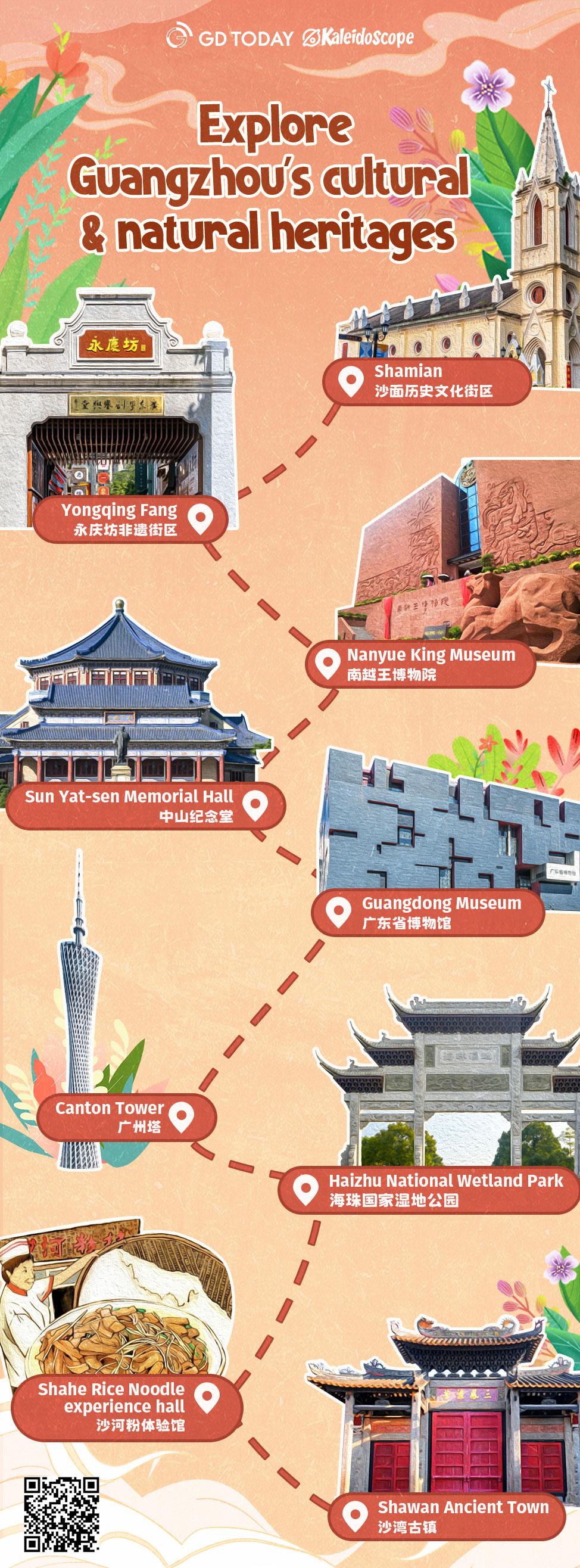
Shamian historical and cultural blocks (沙面历史文化街区)
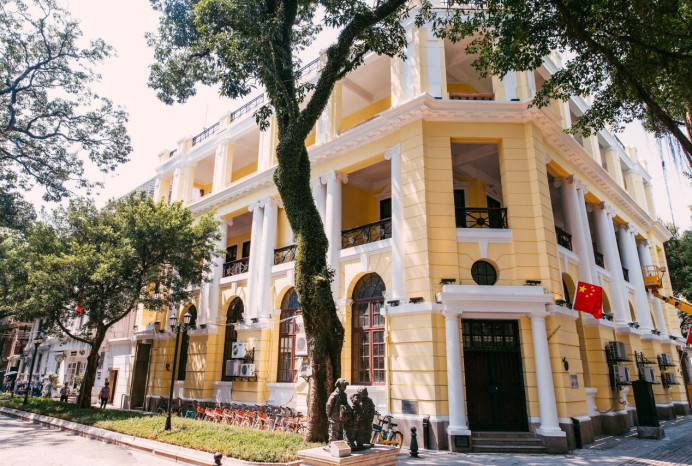
(Photo: Nanfang Daily)
Shamian Island features tranquil pedestrian avenues flanked by trees and historical buildings. The mansions on the island are some of the best preserved Western European-style buildings in the country. More than 40 buildings have been counted to be amongst the most exotic ones in Guangzhou, exhibiting traits of Gothic, Baroque and Neoclassical architecture.
Add.: No. 53-54, Shamian North Street, Liwan District, Guangzhou (广州市荔湾区沙面北街53~54号)
Transportation: Take Metro Line 1 or 6, get off at Huangsha Station and use Exit E.
Yongqing Fang (永庆坊非遗街区)
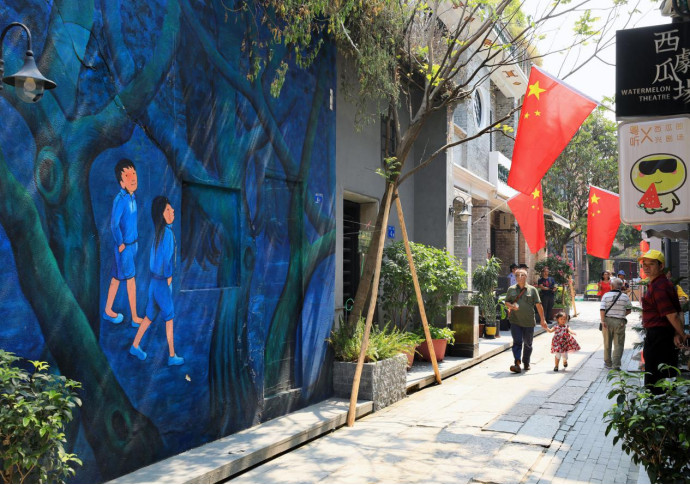
(Photo: Nanfang Daily)
Yongqing Fang, a renovation project combining both cultural heritage and modern-day life, sits right in the heart of Guangzhou's old town.
It holds artists' studios of intangible cultural heritage including Canton porcelain, embroidery, enamel, bone carvings, olive carvings and lion dance, Residents can not only understand the past and present of the Cantonese intangible cultural heritages but also experience them and buy all kinds of exquisite souvenirs.
Add.: No. 99, Enning Road, Liwan District, Guangzhou (广州市荔湾区恩宁路99号)
Transportation: Take Metro Line 1 or 6, get off at Huangsha Station and use Exit B.
The King's Tomb Exhibition Area, Nanyue King Museum (南越王博物院王墓展区)
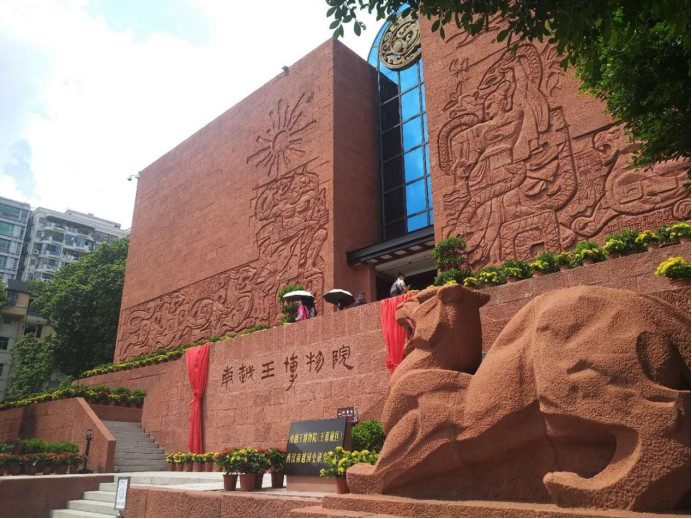
(Photo: Nanfang Daily)
The museum is built on the tomb site of the second Nanyue King, Zhaomo (赵眜), and it has more than 10,000 burial artifacts. It mainly displays the original site of the tomb and the archaeological finds from it.
Nanyue King Museum was named a major national historical site in 1996 and is renowned for its rare assemblage of funerary artifacts representing the diffusion of cultures throughout the Lingnan region during the Han Dynasty.
Add.: No.867, Jiefang North Road, Yuexiu District, Guangzhou (广州市越秀区解放北路867号)
Transportation: Take Metro Line 2, get off at Yuexiu Park Station, and use Exit E.
Sun Yat-sen Memorial Hall (中山纪念堂)
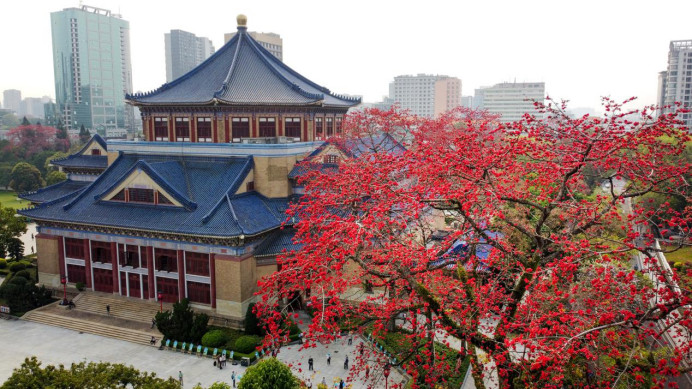
(Photo: Nanfang Daily)
The Sun Yat-sen's Memorial Hall in Guangzhou started construction in 1928 and was completed in 1931. It is the largest hall memorializing Sun Yat-sen in the world. It creatively uses Chinese ancient architecture techniques and is one of the world's architectural treasures with both Chinese and Western features.
Today, Sun Yat-sen's Memorial Hall is a building offering services including commemorative activities, tourism, gatherings and artistic performances. It is a national key cultural relic, a national AAAA tourist attraction and a historical business card for the city of Guangzhou.
Add.: No.299 Dongfeng Zhong Road, Yuexiu District, Guangzhou (广州市越秀区东风中路299号)
Transportation: Take Metro Line 2, get off at Sun Yat-sen Memorial Hall Station, and use Exit C.
Guangdong Museum (广东省博物馆)
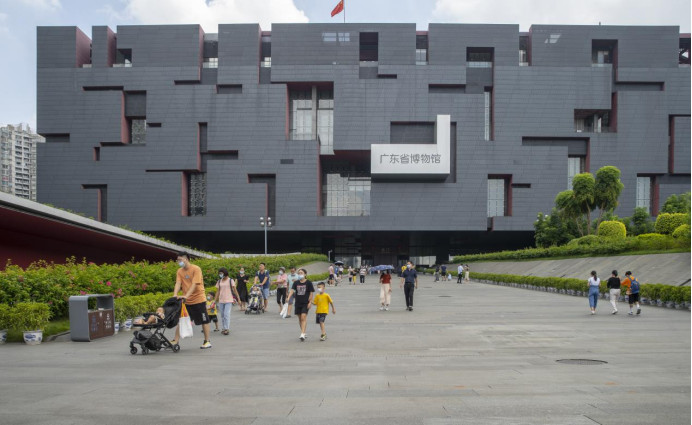
(Photo: Nanfang Daily)
Guangdong Museum is one of the first batch of national first-level museums. By the end of 2021, it had gathered 320,000 collections, including more than 53,000 pieces (sets) of natural specimens and fossils, such as dinosaur and whale.
The building was designed as a rectangular container, with the exterior space's design inspired by the carved ivory ball which is a traditional handicraft in Guangdong province.
Add.: No. 2, Zhujiang East Road, Zhujiang New Town, Tianhe District, Guangzhou (广州市天河区珠江东路2号)
Transportation: Take Metro Line 3 or Line 5, get off at Zhujiang New Town Station and use Exit C.
Canton Tower (广州塔)

(Photo: Nanfang Daily)
Canton Tower, nicknamed the "tiny waist" by locals, is located at an intersection of Guangzhou New City Central Axis and Pearl River, facing directly Haixinsha Island and Zhujiang New Town.
The tower boasts a total height of 600 meters, with 450 meters of its main body and 150 meters of its antenna, which makes it a landmark of the city. It is a comprehensive sightseeing building as well as a renowned tourist attraction with the functions of adventure, food, sci-tech, exhibition, education and shopping.
Add.: No.222 Yuejiang Road, Haizhu District, Guangzhou (广州市海珠区阅江西路222号)
Transportation: Take Metro Line 3, get off at Canton Tower Station, and use Exit A or B.
Haizhu National Wetland Park (海珠国家湿地公园)
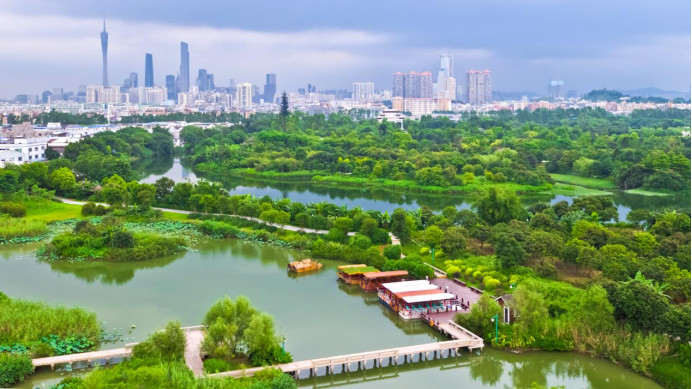
(Photo: Nanfang Daily)
Located in the southern section of the central axis of Guangzhou city, Haizhu National Wetland Park has an area of approximately 1,100 hectares, 869 of which are included in the national wetland plan.
Rivers intertwine here with flourishing trees, fragrant fruits, and flying birds. It embodies the essence of a thousand-year-old fruit farming culture and combines both urban and natural scenery. It serves not only as an important passage for migratory birds but also a reserve of Cantonese culture.
Add.: No.168, Xinjiao Middle Road, Haizhu District, Guangzhou (广州市海珠区新滘中路168号)
Transportation: Take Metro Line 3, get off at Datang Station and use Exit B.
Shahe Rice Noodle experience hall (沙河粉体验馆)
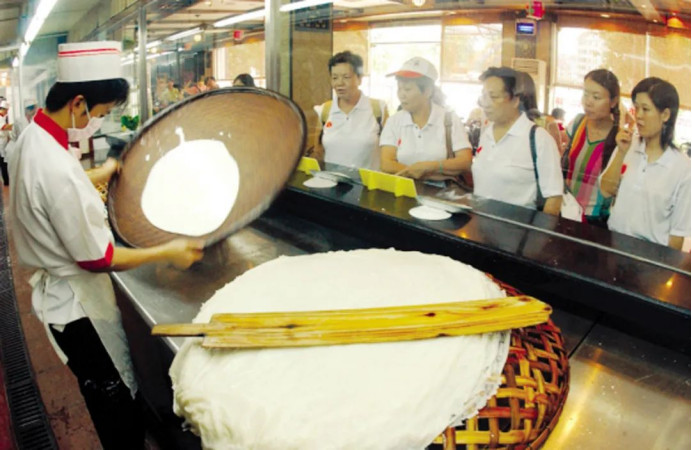
(Photo: Haizhu Fabu)
Shahe Rice Noodle is a traditional Chinese noodle originating from Shahe community in Guangzhou. In order to make the noodles, rice needs to be soaked, ground into a paste, steamed, and cut into long and thin strips. These broad noodles are white, while the texture is slightly slippery, elastic, and chewy. They're often stir-fried with meat, veggies, oil, and spices for a dish called chow fun.
The Shahe Rice Noodle restaurant is located inside Haizhu National Wetland Park where you can learn to make Shahe Rice Noodle, relish Cantonese cuisine, and enjoy the beautiful scenery of Haizhu Lake.
Add.: No.168, Xinjiao Middle Road, Haizhu District, Guangzhou (广州市海珠区新滘中路168号)
Transportation: Take Metro Line 3, get off at Datang Station and use Exit B.
Shawan Ancient Town (沙湾古镇)

(Photo: Shawan ancient town)
Shawan Ancient Town is located in the center of Panyu District in southern Guangzhou. Originally built during the Song Dynasty (960-1279), it has a history of over 800 years. Several intangible cultural heritages, such as Cantonese folk music, the lion dance, and Piaose (a kind of folk art integrating plays, magic, acrobatics, music, and dance), are preserved here.
The 10 thematic halls in the town, including Liugeng Hall, He Binglin Academic Memorial Hall, and Sanren Hall, showcase the magnificent ancestral culture, clan culture, architectural culture, farming culture, folk literature, and art of Shawan.
Add.: No.10, Daxiangyong Road, Shawan Town, Panyu District, Guangzhou (广州市番禺区沙湾大巷涌路10号)
Transportation: Take Panyu Bus No. 6, 7, 67, 108 or 108B, and get off at Shawan Ancient Town South Gate station (沙湾古镇南门站).
Source: Newsgd.com, China Daily
















